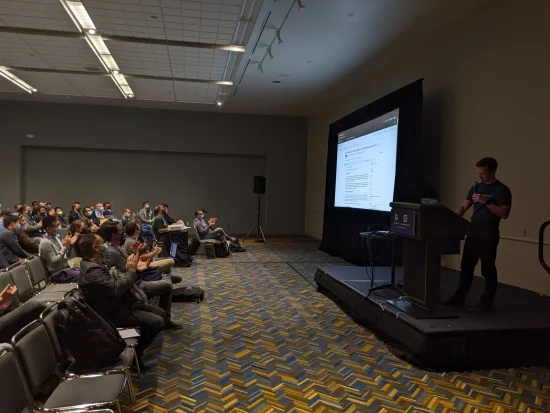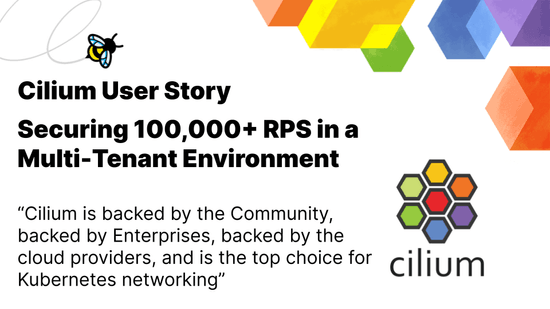Kubernetes Network Policies Using Cilium - Controlling Ingress/Egress from Namespaces
Kubernetes provides Network Policies for controlling traffic going in and out of the pods. Cilium implements the Kubernetes Network Policies for L3/L4 level and extends with L7 policies for granular API-level security for common protocols such as HTTP, Kafka, gRPC, etc. As per the Kubernetes Network Policy model, Cilium policies follow the whitelist model. When a policy is enabled for a pod, all ingress and egress traffic are denied by default unless the policy specification allows specific traffic. As a result, inter-namespace communication will be denied by default and we need policy specifications to whitelist traffic within namespace and legitimate traffic in and out of a namespace.
Setup to test the policies
- Kubernetes cluster running on AWS created using Cilium Kubespray guide
- A sample application created using commands below
kubectl create ns empire
kubectl create -f https://raw.githubusercontent.com/cilium/cilium/v1.2.2/examples/minikube/http-sw-app.yaml -n empireAllowing all traffic within a namespace while blocking inter-namespace traffic
The policy specification below allows all traffic within the empire namespace.
cat <<EOF | kubectl create -n empire -f -
apiVersion: "cilium.io/v2"
kind: CiliumNetworkPolicy
metadata:
name: "allow-within-namespace"
specs:
- endpointSelector:
matchLabels: {}
egress:
- toEndpoints:
- matchLabels:
"k8s:io.kubernetes.pod.namespace": empire
ingress:
- fromEndpoints:
- matchLabels:
"k8s:io.kubernetes.pod.namespace": empire
EOFThe key components of the policy are:
- The
endpointSelector:matchLabels={}will select all pods in the namespaceempire. The scope of Network Policies is per namespace, as noted in the-n empireparameter for creating the policy. - For the selected pods, egress is allowed as long as the identity of destination pods has label
namespace=empire - Similar to the egress rule, the ingress rule allows incoming traffic from pods in
namespace=empire
To test the policy, access the deathstar pod IP and deathstar service:
# Replace below IP with the deathstar pod IP in your cluster
$ kubectl exec tiefighter -n empire -- curl -sL 100.96.7.169/v1
{
...
}
#test that ingress is denied from other namespaces
$ kubectl exec -it kube-dns-6c7dfbf97d-cm4tt -n kube-system -- wget 100.96.7.169/v1
Defaulting container name to kubedns.
Use 'kubectl describe pod/kube-dns-6c7dfbf97d-cm4tt -n kube-system' to see all of the containers in this pod.
Connecting to 100.96.7.169 (100.96.7.169:80)
^C
#access using service name will fail as egress to kube-dns is blocked
$ kubectl exec -it tiefighter -n empire -- curl deathstar.empire.svc.cluster.local/v1
^CThe direct call from tiefighter pod to deathstar pod works as expected since we have whitelisted the egress and ingress traffic within namespace empire. The ingress call from kube-dns to deathstar is blocked. And the call to deathstar service using the DNS name doesn't work. This is because we haven't whitelisted the calls to kube-dns, which runs in the kube-system namespace.
Allowing select egress to outside the namespace, for example, kube-dns
Pods running in this Kubernetes cluster use the kube-dns service for resolving service names to IPs. Allowing pods to access kube-dns running in kube-system namespace is a good example of whitelisting legitimate inter-namespace traffic.
cat <<EOF | kubectl create -n empire -f -
apiVersion: "cilium.io/v2"
kind: CiliumNetworkPolicy
metadata:
name: "allow-within-namespace"
specs:
- endpointSelector:
matchLabels: {}
egress:
- toEndpoints:
- matchLabels:
"k8s:io.kubernetes.pod.namespace": empire
ingress:
- fromEndpoints:
- matchLabels:
"k8s:io.kubernetes.pod.namespace": empire
- endpointSelector:
matchLabels: {}
egress:
- toEndpoints:
- matchLabels:
"k8s:io.kubernetes.pod.namespace": kube-system
"k8s:k8s-app": kube-dns
EOFThe policy allows egress to destination pods belonging to kube-system namespace and having k8s-app=kube-dns. However, access to any other service running in kube-system namespace is not allowed.
#access using service
kubectl exec -it tiefighter -n empire -- curl deathstar.empire.svc.cluster.local/v1
{
...
}
#access to other services in kube-system is not allowed
kubectl exec -it tiefighter -n empire -- curl -sL kubernetes-dashboard.kube-system.svc.cluster.local/version
^CAllowing select ingress from other namespaces
Similar to whitelisting the kube-dns access, there is often need to whitelist specific ingress traffic from other namespaces. A common example is Prometheus monitoring, which makes HTTP GET calls to pods to pull metrics. We will create a simple Prometheus pod in monitoring namespace and apply the following policy which allows traffic from Prometheus to all the pods in the empire namespace. Additionally, we will restrict the Prometheus pod access to specific port, 8080, and to specific HTTP GET /metrics call. This is an example of combining L3, L4 and L7 policies for strict least privilege access.
kubectl create -f https://raw.githubusercontent.com/cilium/cilium/v1.2/examples/kubernetes/addons/prometheus/prometheus.yaml
cat <<EOF | kubectl create -n empire -f -
apiVersion: "cilium.io/v2"
kind: CiliumNetworkPolicy
metadata:
name: "allow-within-namespace"
specs:
- endpointSelector:
matchLabels: {}
egress:
- toEndpoints:
- matchLabels:
"k8s:io.kubernetes.pod.namespace": empire
ingress:
- fromEndpoints:
- matchLabels:
"k8s:io.kubernetes.pod.namespace": empire
- endpointSelector:
matchLabels: {}
egress:
- toEndpoints:
- matchLabels:
"k8s:io.kubernetes.pod.namespace": kube-system
"k8s:k8s-app": kube-dns
- endpointSelector:
matchLabels: {}
ingress:
- fromEndpoints:
- matchLabels:
"k8s:io.kubernetes.pod.namespace": monitoring
app: prometheus
toPorts:
- ports:
- port: "8080"
protocol: "TCP"
rules:
http:
- method: "GET"
path: "/metrics"
EOFThe key elements of the policy are:
- The ingress policy spec is very similar to the egress and uses
ingress:fromEndpointsalong withmatchLabelsto allow traffic fromapp=prometheusandnamespace=monitoring - The
toPortsspecification restricts access to port8080 - The
httprules section further restricts access toGET /metrics
To test:
# This will be allowed
kubectl exec -it prometheus-core-84677d797f-wrhm7 -n monitoring -- wget -O metrics deathstar.empire.svc.cluster.local:8080/metrics
# This will be denied
kubectl exec -it prometheus-core-84677d797f-wrhm7 -n monitoring -- wget -O random_get deathstar.empire.svc.cluster.local:80/v1
^CAllowing select egress to outside the cluster
Often pods will need access to services outside the cluster. These communications can be allowed by either whitelisting the destination CIDRs or by using DNS. The policy below allows all pods in empire namespace to access the external service specified by DNS, cilium.io.
cat <<EOF | kubectl create -n empire -f -
apiVersion: "cilium.io/v2"
kind: CiliumNetworkPolicy
metadata:
name: "allow-within-namespace"
specs:
- endpointSelector:
matchLabels: {}
egress:
- toEndpoints:
- matchLabels:
"k8s:io.kubernetes.pod.namespace": empire
ingress:
- fromEndpoints:
- matchLabels:
"k8s:io.kubernetes.pod.namespace": empire
- endpointSelector:
matchLabels: {}
egress:
- toEndpoints:
- matchLabels:
"k8s:io.kubernetes.pod.namespace": kube-system
"k8s:k8s-app": kube-dns
- endpointSelector:
matchLabels: {}
egress:
- toFQDNs:
- matchName: "cilium.io"
EOFTo test run the following commands:
$ kubectl exec -it tiefighter -n empire -- curl -sL cilium.io
...
...
...
$ kubectl exec -it tiefighter -n empire -- curl -sL google.com
^CAllowing select ingress from outside the cluster
Kubernetes services are exposed outside the cluster using either NodePort, LoadBalancer or Ingress Controllers. The IP-address of the original client may not be available depending on the load balancing behavior and/or SNAT scenarios for NodePort. This topic requires broader consideration and will be covered in a dedicated post.
We hope the above namespace based access control examples will help you secure your multi-tenant Kubernetes clusters. If you have use cases, questions, or want to discuss Cilium Kubernetes networking and security then join us on slack



